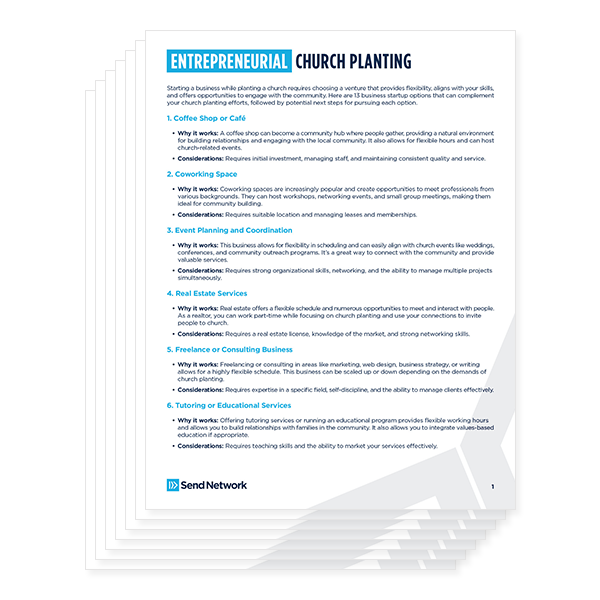Why would a church want to be a Sending Church?
Taking responsibility for a new church plant can be difficult and time consuming. Sending your best people, investing your time and sharing your resources to begin a new work in a difficult place requires a giant step of faith.
So, what should move a church to take on this great task? Here are nine reasons:
- New churches reach new people more effectively.
269 million people in the United States and Canada do not have a personal relationship with Christ. One study revealed established Southern Baptist churches baptized 3.4 people per 100 resident members, while new churches baptized 11.7. - New churches are needed to reach a growing population.
The church-to-population ratio in the United States peaked at one church for every 430 individuals in World War I. Today there is only one church for every 6,194 people. In Canada, the ratio is 1:115,040. - New churches are needed to reach different kinds of people.
The diversity of North America necessitates new churches who are willing and able to reach different kinds of people. The gospel doesn’t change, but our methods must be contextualized to the people we are reaching. - Church planting is a central biblical model for kingdom growth.
Ed Stetzer writes, “When we look throughout the New Testament, we see church planting as an established pattern . . . It’s the first thing the disciples did when they responded to the commissions of Jesus. They planted churches.” 1- Church plants are healthier when a Sending Church is involved.
The survivability of church plants increases dramatically when a strong Sending Church is involved.- Churches that send grow spiritually.
Sending Churches are often stretched spiritually as they trust the Lord with their people and finances. J.D. Greear writes, “The closer you walk with Jesus and the more you understand what He did to save you, the more natural sending will become. Sending, like all spiritual fruits, grows out of a healthy gospel culture.” 2- Churches that send grow missionally.
Churches involved in planting new churches are constantly challenged with a greater kingdom vision, ever-new missional strategies and an increased passion for reaching their own communities.- Churches that send grow leaders.
Sending people to plant churches inevitably create holes in the Sending Church’s leadership. These holes provide great developmental opportunities for new leaders. The best Sending Churches make the most of these challenges by creating leadership factories, with new leaders constantly ready to serve, grow and be sent.- Churches that send grow numerically.
Dr. Jeffrey Farmer’s research indicates that churches involved in helping start new churches experienced positive increases in worship attendance, baptism and small group participation.3 - Church plants are healthier when a Sending Church is involved.
1 “9 Reasons an Established Church Should Plant Churches,” B&H Academic Blog (April 26, 2016) https://www.bhacademicblog.com/9-reasons-an-established-church- should- plant-churches/.
2 J.D. Greear, Gaining by Loosing: Why the Future Belongs to Churches that Send (Grand Rapids: Zondervan, 2015), 51.
3 Jeffrey Farmer, “Church Planting Sponsorship: A Statistical Analysis of Sponsoring a Church Plant as a Means of Revitalization of the Sponsor Church” (Ph.D. diss., New Orleans Baptist Theological Seminary, 2007).
Published March 6, 2020




